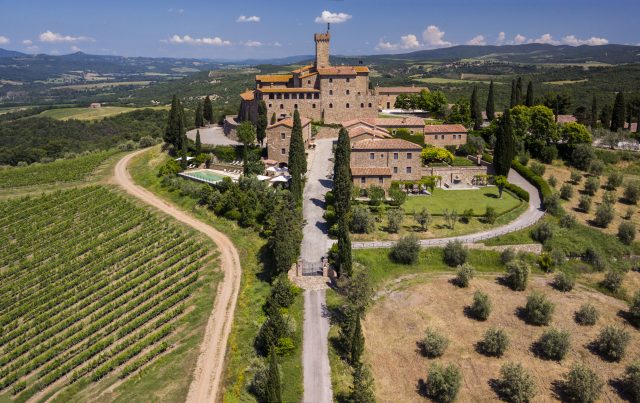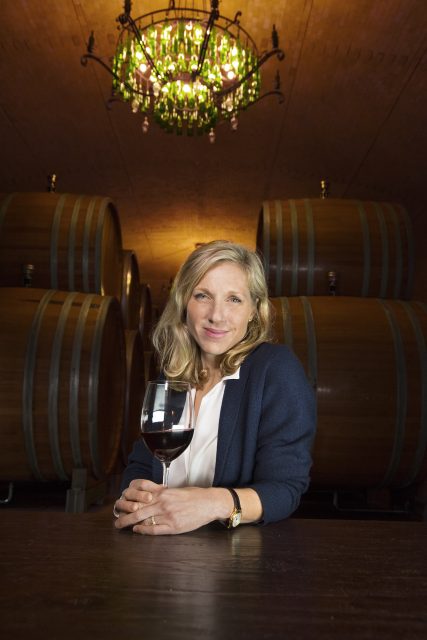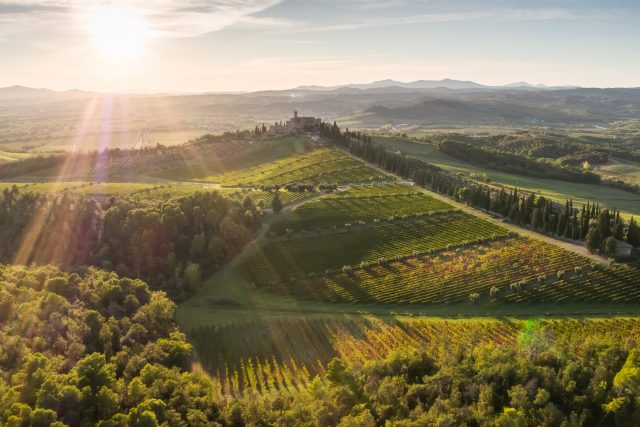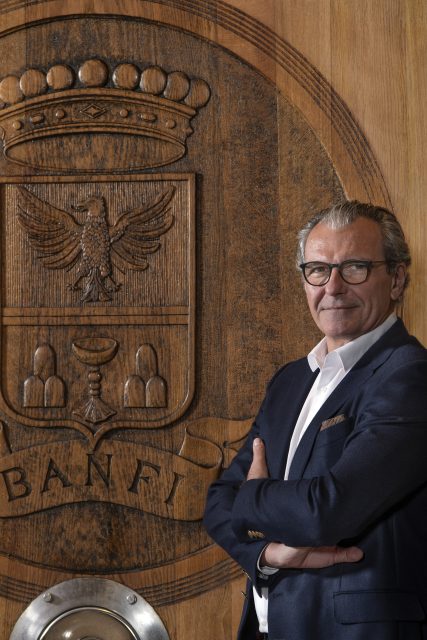Q&A: Cristina Mariani-May and Enrico Viglierchio shake things up and forge ahead
There are certain notions about particular destinations that are so deeply embedded in the universal human psyche, it feels like they’ve been with us for centuries: the elegance and romance of Paris, the adrenaline-pumping adventure of Mount Everest, the bohemian luxury and epicurean delight of Tuscany.

While savvy travellers have been flocking to Tuscany for centuries, the current fantasy’s particular iteration is modern, and a product (mama mia!) of a highly successful, business-minded American family.
The visionary acumen, boundless entrepreneurialism and vast financial resources of the Mariani family not only transformed the Brunello category from highly limited, often inconsistent regional product to a global juggernaut synonymous with Italian quality, they imported the concept of oenotourism to the country.
(Briefly strain your imagination and picture a world bereft of comfy Italian Castellos welcoming thirsty travellers with cooking classes, hot air balloon rides, massages, horseback riding in the vineyards and Michelin-starred tasting menus that sources ingredients from the biodiverse estate, and you’re picturing a world without the Marianis.)
It would take acres of ink to fully illuminate the achievements of the Mariani crew, but here’s a Cliffs Notes version: Banfi was founded as a US-based import company of fine wines in 1919 by Giovani F. Mariani. In the 1970s, his sons, John and Harry, arrived in Montalcino in search of a Brunello to import. Finding an isolated rural region with a few dozen producers, and very little infrastructure to scale up and export, they saw an opportunity to create, from whole cloth, a flagship Brunello that would both define and elevate the region’s terroir. They set to work, and within six years, they had built what is now the largest contiguous wine estate in Italy, with close to 7,000 acres—800 of which is devoted to wine-growing, and the rest focused on the cultivation of plums, cherries, wheat and spelt. (Banfi is the largest supplier of dried plums in Europe).
In 1982, the Mariani family acquired a 12th century Castello set within their vineyards. Today, the Castello—a Relais & Chateaux property—offers 14 luxury rooms and suites, two restaurants (one with a Michelin star), an enoteca, a museum with one of the largest collections of Roman-era glass bottles in the world and a panoply of “experiences” from classes to adventure activities available. But their primary objective is to create premium wine, as evidenced by Banfi’s relentless clonal experimentation, vineyard acquisitions in Piedmont and continued expansion of their import company. All told, the Marianis have created a vast, global empire of winemaking and selling. Too vast?

I recently visited Castello Banfi to learn more about where third-generation CEO Cristina Mariani-May has guided Banfi since taking on her current role in 2018, and where she sees it going in the future. Read on for insight from Mariani-May and Banfi’s general manger Enrico Viglierchio.
You took on the role of CEO in 2018, and changed the direction of the company. How do you plan to continue to grow Banfi in the coming years?
CMM: “Our shift was all about focus – not just focus on our portfolio today, but focus on the financial health of our company and preparing our company for the future. We always would say that what we own was important, but far too often our U.S. portfolio would get sidetracked in favor of other responsibilities. Our new direction allowed us to actually prioritize and give our proprietary labels the attention they deserve. For Banfi, this translates to a shift in our mix, to a more premium portfolio, led by Castello Banfi Brunello and Super Tuscans.”

How important is wine tourism to your bottom line and your brand identity?
CMM: “Oh, it’s an integral part of the overall brand identity. We have put a tremendous amount of effort into establishing Banfi as a beacon of Tuscan hospitality and whether our guests are enjoying our fine wines and Michelin-starred dining or gala events such as Jazz & Wine, Banfi offers a luxury hospitality experience. Our Relais & Chateaux property is boutique with just 14 rooms, but the setting, on our agricultural estate, is the perfect way for people to experience Banfi, it’s magical. It’s hard to capture consumer loyalty when it comes to wine but it’s not the case when it comes to travel or authentic experiences. The hospitality part of the business is so closely related to the brand, it’s essentially one and the same.”
Banfi is credited with pioneering Brunello on the world stage—where are you taking the category now?
CMM: “While we were not the first producers of Brunello, Banfi’s commitment to the territory of Montalcino and all of the research we led on Sangiovese certainly propelled the Brunello category overall and helped garner global recognition, paving the way for the luxury status it enjoys today. For our portfolio, Castello Banfi Brunello di Montalcino is by far our most important wine, it is our flagship, emblematic of the philosophy of our diverse estate. Banfi’s growth is being driven by Brunello which has only benefitted from the [post-pandemic] on-premise comeback. In fact, we released the first vintage of our single vineyard Brunello, Castello Banfi Vigna Marruchetto 2016, in 2021 to rave reviews. The production is quite limited and we bring less than 300 six-packs into the U.S., but so far, the response has been incredible. Strange timing, but an important step for Banfi and a great way to celebrate the five-star vintage.”
Partner Content
What is Banfi’s approach to sustainability—both in terms of the environment and social issues?
CMM: “Our efforts in sustainability were recognized with the Equalitas certification [a third-party verified accreditation that assesses a company’s social, economic and environmental sustainability], a feat for an estate of our size, and we’re incredibly proud. The team also publishes a full sustainability report every year that details initiatives in the vineyards and winery, but also Banfi’s active presence in the larger community. One initiative that exemplifies Banfi’s DNA is our Sanguis Jovis project, a research and training center that we founded through our foundation, dedicated to Sangiovese. It is an education program that is collaborative, progressive and focused on sharing the culture of Sangiovese – something we have celebrated for decades.

In 2020, you changed the type of wood you age some of your Brunellos in. Why?
EV: In 2020 we started to use also Austrian/German oak with 40 hectoliter casks made by three different coopers. They are 18 in total. Since 2015 we are moving, more and more, to the use of big casks instead of the 350-liter barriques. This is due to our wish of having Brunello less impacted by the wood. In this process, is included the use of the 40 hl barrels made with different oaks out of French. As for now, we are still making experimentation. The main aging happens in the French oak casks (60-90-113 hectoliters), and in small part in 350-liter French oak barrels. Each Brunello label has a different aging.
What other things are you doing to tackle the challenges of climate change?
EV: “We created the Alberello Banfi project in the early 2000s. It is a trellising system that leaves a few gems, which in turn give life to a few vine branches; those branches produce premium grapes at minimum of costs. Previously, we used the spurred cordon trellising system, which produced two to three times as much, but at a much lower quality. We have found that reducing quantity for Sangiovese is key to increasing quality, and it also allows us to grow it in difficult conditions, like clay and poor soils with less fertilizer and far less manual labor. We have found less disease with this system too. The Alberello Banfi is one of the main measures we are using for climate change, together with the introduction of new varieties, the fact of moving our vineyards from the lower parts of the company to the higher ones.”
How does your experimental field play into your overall climate strategy?
EV: “We have planted two vineyards in opposite pedoclimatic situations to evaluate the qualitative, productive and resistance responses to fungal diseases in both places. We have planted 10 crosses that are resistant to botrytis, four hybrids that are recognized in Italy but not cultivated in Tuscany and are resistant to oidium and mildew, eight existing varieties that are grown in Italy but not approved in Tuscany and recognized for their excellent oenological characteristics, Sangiovese on four different types of graft-holders that are believed to better for clay soils and finally, for comparison, Sangiovese, Vermentino and Sauvignon Blanc. We began planting in 2019 and we hope to discover new ways to farm more sustainably and combat climate change; by law, a full analysis of our findings can be made after six years. While we are making micro-vinifications in steel tanks, we will not sell the wines.”

How have you and your family have fused American and Italian values and vision in terms of how you manage your business?
CMM: “I would say that the pioneering spirit of my father is very much American! Sharing the results of the clonal research we spearheaded for the betterment of the territory also feels American in spirit. Besides an expertise in winemaking, there’s a decided richness when it comes to Italian values of culture and hospitality which truly distinguishes Banfi. What’s completely shared though, is a love of the territory, a dedication to preserving the diversity of our estate and a relentless effort to do things better.”
Where are you taking Banfi next?
CMM: “We are increasing our focus on our Super Tuscan collection. Highly accoladed wines such as Castello Banfi Summus and Excelsus have long been seen as portfolio jewels, but there’s an expanded interest in our Cabernet-dominant blends here in the U.S. Additionally, we’ll be looking to share the stellar sparkling program that Banfi has built in the Alta Langa DOCG. We’ll also continue to expand distribution on our estate white wines as well – consumers are absolutely loving Banfi La Pettegola Vermentino. The last few years were focused on solidifying our portfolio, our team, our position and we feel we’re in a good place, focused on projects that support Banfi’s luxury positioning.”
Related news
Strong peak trading to boost Naked Wines' year profitability




